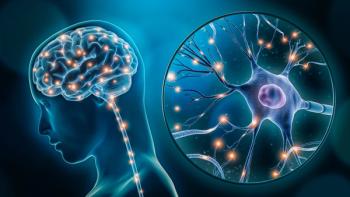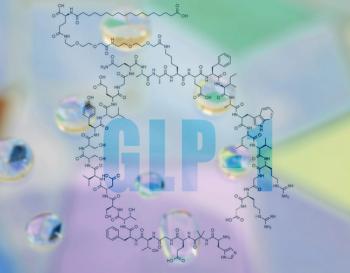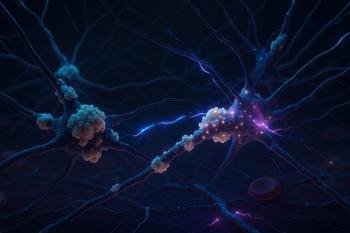
Study Finds Zuranolone Effective for Anhedonia in Patients With PPD
Key Takeaways
- Zuranolone significantly improved anhedonia and depressive symptoms in postpartum depression patients compared to placebo, as shown in the SKYLARK Study.
- The study involved 196 female adults, with zuranolone showing a greater reduction in MADRS scores than placebo by day 45.
Poster presented at the APA Annual Meeting finds zuranolone effective for anhedonia associated with PPD.
CONFERENCE REPORTER
New data presented at the 2025 American Psychiatric Association Annual Meeting demonstrated that zuranolone was relatively safe and effective to addressing anhedonia in adult patients with
The poster leverage data from the SKYLARK Study (
Participants included female adults (N=196) aged 18 to 45 years who had a 17-item Hamilton Rating Scale or Depression (HAMD-17) total score of 26. All patients were randomized to receive zuranolone (N=98) or placebo (N=97) once daily for 14 days; there follow-ups evaluations conducted through day 45 to ascertain changes in the Montgomery-Måsberg Depression Rating Scale (MADRS) anhedonia subscale score, which examines such symptoms as apparent sadness, reported sadness, concentration difficulty, lassitude, and inability to feel.
At baseline, participants in both the zuranolone and placebo treatment groups had similar MADRS scores, with a mean (SD) MADRS total scores for zuranolone of 35.5 (5.37) and a mean score of 35.0 (4.81). for placebo. As the study progressed, patients in the zuranolone group fared better. At day 15, for example, depressive symptoms measured by MADRS total scores decreased by 19.7 (1.20) points in the zuranolone group while those in the placebo group only realized a 14.6 (1.21) reduction (nominal p=0.003).
Improvements were also seen in anhedonia, which was assessed via LS mean (SE) CFB in MADRS anhedonia subscale scores. By day 8, patients in the zuranolone group experienced an 8.8 (0.78) reduction, while those in the placebo group only experienced a 6.4 (0.78) reduction (nominal p=0.012). The improvements continued through the study, as measured on day 45: patients in the zuranolone group saw a reduction of 12.7 (0.85) points vs a 9.9 (0.85) reduction for participants in the placebo group (nominal p=0.008).
The post hoc analysis likewise found zuranolone to be relatively well tolerated. Most of the treatment adverse events (62/65 [95.38%]) reported were found to be mild or moderate. Somnolence, which also included hypersomnia and sedation) was the most commonly reported event (35/98 [35.71%]). These were categorized as mild or moderate events and resolved either during treatment or shortly (less than 5 days) following the final dose.
Zuranolone, which was approved in 2023 by the US Food and Drug Administration for the treatment of PPD in 2023, became the first oral agent to address PPD. (Zuranolone has also been investigated for the treatment of
“Postpartum depression is a serious and potentially life-threatening condition in which women experience sadness, guilt, worthlessness—even, in severe cases, thoughts of harming themselves or their child. And, because PPD can disrupt the maternal-infant bond, it can also have consequences for the child’s physical and emotional development,” Tiffany R. Farchione, MD, then director of the FDA Center for Drug Evaluation and Research Division of Psychiatry, said following its approval.3
References
1. Potter M, Matthews D, Silver D et al. Improvement in anhedonia symptoms with zuranolone in patients with postpartum depression (PPD): A post hoc analysis of the phase 3 Skylark study. Presented at the 2025 American Psychiatric Association Annual Meeting; May 17-21, 2025; Los Angeles, California.
2. Deligiannidis KM, Meltzer-Brody S, Maximos B, Peeper EQ, Freeman M, Lasser R, Bullock A, Kotecha M, Li S, Forrestal F, Rana N, Garcia M, Leclair B, Doherty J. Zuranolone for the Treatment of Postpartum Depression. Am J Psychiatry. 2023 Sep 1;180(9):668-675.
3. FDA Approves First Oral Treatment for Postpartum Depression. Press release. August 4, 2023. Accessed May 20, 2025. https://www.fda.gov/news-events/press-announcements/fda-approves-first-oral-treatment-postpartum-depression
Newsletter
Receive trusted psychiatric news, expert analysis, and clinical insights — subscribe today to support your practice and your patients.














